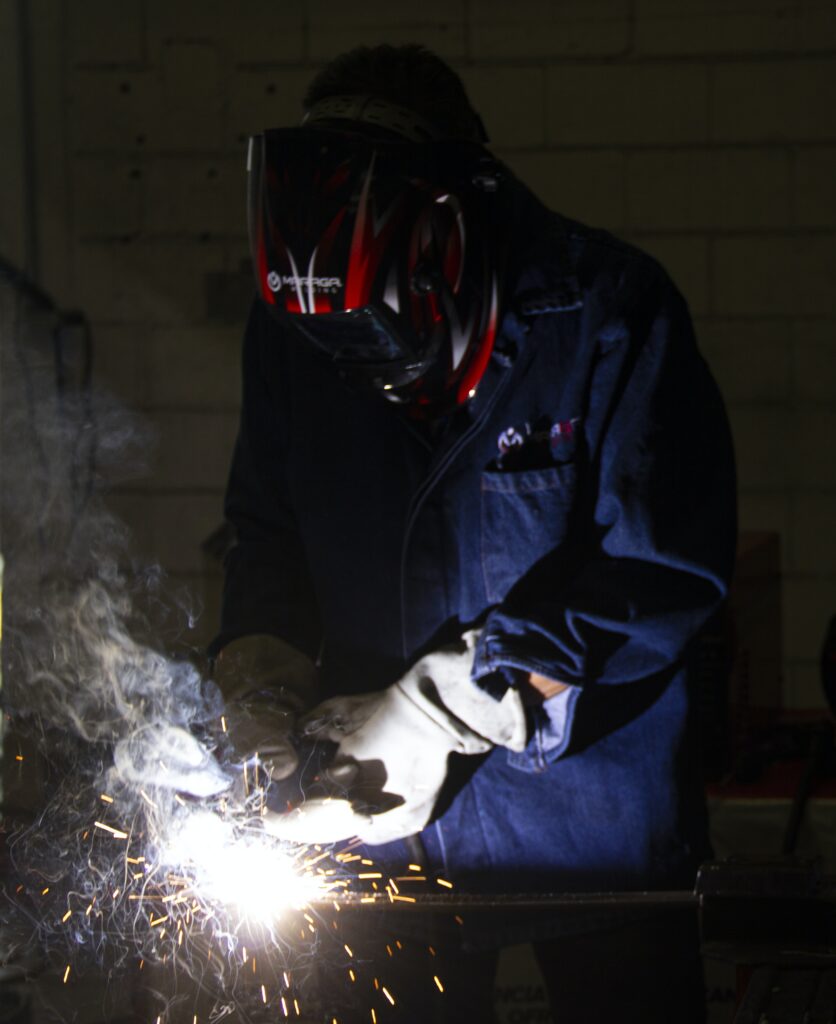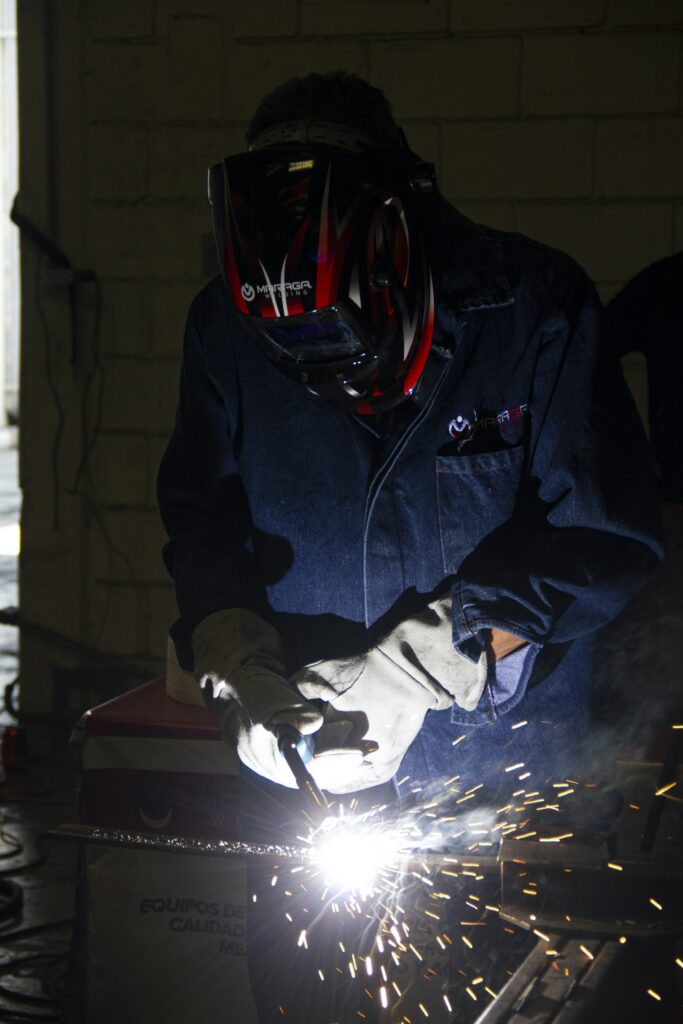Been thinking about pursuing a career in the thriving field of welding? Great decision! In this detailed guide titled “How to Apply For Welding Apprenticeship”, we’ll take you by the hand, leading you through each step of the application process. You’ll gain insights on everything – from finding the right apprenticeship program to submitting a compelling application, and nailing that crucial interview. Say goodbye to confusion and hello to confidence as you march ahead in your career journey!

Understanding the Welding Apprenticeship
Definition of welding apprenticeship
A welding apprenticeship is a type of vocational training that combines both practical work and academic study. During such an apprenticeship, you get the chance to work in a professional setting under the supervision of experienced welders while also earning a salary. This experience not only lets you learn the welder’s trade directly but also gain valuable skills that can help you become a proficient welder.
The importance and benefits of welding apprenticeship
There are numerous benefits to participating in a welding apprenticeship. Perhaps the most important aspect is that an apprenticeship offers you a direct entry into the job market without needing any formal education or experience in welding. It also provides hands-on training from skilled professionals in the industry, enabling you to learn the trade through experiential learning, which reinforces the theoretical knowledge. Above all, an apprenticeship also allows you to earn while you learn, mitigating the financial burden that might stem from a traditional education path.
Types of welding apprenticeships
There are various types of welding apprenticeships available for you based on different welding techniques and applications. Some popular types include Tungsten Inert Gas (TIG) welding, Metal Inert Gas (MIG) welding, and Shielded Metal Arc Welding (SMAW) welding apprenticeships. Each of these offers different training experiences, responsibilities, and skills development opportunities, based on the specific type of welding involved.
Prerequisites for Welding Apprenticeship
Educational qualifications
There’s no universal standard for educational qualifications required for welding apprenticeships, and it largely depends on the employer. However, most employers typically require an applicant to have a high school diploma or a GED equivalent. Some might look for specific coursework completed in mathematics, physics, or even specific training in technical or vocational schools.
Skills and physical requirements
As a welder, you need to possess a certain set of skills and physical abilities. Understanding blueprints, attention to detail, hand-eye coordination, and stamina are some essential skills for a welder. Physically, you need to have good strength and dexterity, great balance, and the capability to work in various conditions, sometimes even in confined spaces.
Age limitations and legal requirements
In most regions, the minimum age requirement for starting an apprenticeship is usually 16 or 18 years. However, some specialized apprenticeships may require you to be older. Additionally, you may also need to comply with certain legal requirements, such as having a valid work permit or consent of a parent or guardian if you’re under 18.
How to Search for Welding Apprenticeships
Online search platforms
Finding welding apprenticeships is increasingly becoming easier with the rise of online platforms. Websites like Indeed, Glassdoor, and others regularly post apprenticeship opportunities. Additionally, you can also check out vocational training boards, union websites, and government job portals which often list such opportunities.
Networking to find opportunities
Like all professions, networking has its benefits when searching for welding apprenticeships. Attending industry events, joining relevant groups and communities online, being active on LinkedIn, and staying connected with vocational training schools can open doors to various opportunities.
Direct applications to welding companies
Apart from online platforms and networking, you can also apply directly to welding companies. This approach, although traditional, can be quite effective, especially for local welding companies and shops who might not advertise their positions widely.
Choosing the Right Apprenticeship Program
Understanding different types of programs
Not all apprenticeship programs are created equal. Understanding the different types of programs, their requirements, the skills they prioritize, and the type of work experience they offer is vital in making an informed decision.
Comparing benefits and experiences
It’s also important to compare the benefits and experiences different programs offer. This could include opportunities for further learning, the type of projects you’ll work on, the possibilities for certifications, and potential job placements following your apprenticeship.
How to determine program quality
Determining the quality of an apprenticeship program can be tricky. However, you might consider factors such as the reputation of the employer or institution offering the apprenticeship, the qualifications and experience of the instructors, the ratio of apprentices to instructors, and the success record of past apprentices.

Preparing your Application
Application requirements
Generally, applications for welding apprenticeships require you to submit proof of your education, any related work experience, any relevant skills or certifications, and occasionally, a health and fitness certificate. It’s crucial to understand these requirements early to prepare for a successful application.
Strengthening your resume or CV
A well-structured resume or CV can significantly enhance your application. Highlight any related experience or training you have in welding or related fields. Also, place emphasis on the skills that particularly align with the demands of the welding industry. Remember to keep your resume concise yet comprehensive.
Creating a convincing cover letter
A great cover letter can be your ticket to securing an apprenticeship. It is crucial to include not just your qualifications, but also your motivation, and why you are interested in welding. Express your interest in learning and demonstrate your potential to become a successful welder.
The Application Process
Typical application timelines
Every apprenticeship application process will have its own timeline, but generally, they follow a pattern. Once you’ve made your application, you can expect to wait a few weeks while it’s reviewed. Following this, shortlisted candidates will usually be invited to an interview or assessment.
Stages of the process
The application process usually involves several stages – application submission, review of applications, interviews, and sometimes, additional skill tests or assessments. If you are successful, you will receive an offer to start the apprenticeship.
Understanding the selection criteria
Understanding the selection criteria can give you a competitive edge. These can include educational requirements, technical abilities, soft skills, and even personality traits. Remember, apprenticeship programs are not just looking for skills but are also looking for people willing to learn and commit to the program.

Facing the Interview
Preparing for questions
Being well-prepared for interview questions will increase your chances of success. Questions might revolve around your welding skills, understanding of safety practices, problem-solving skills, and your motivation to become a welder.
Sharing your previous experiences
If you have any previous experiences relevant to welding, be prepared to share them. This could be work experience, school projects, or even a personal project which demonstrates your initiative and your passion for welding.
Discussing your interest in welding
Showing a genuine interest in welding can set you apart from other candidates. Be prepared to discuss why you chose welding and how you see your career developing in the field.
Post-Application Follow Up
Importance of staying in touch
Staying in touch with the employer after your interview keeps you in their minds. A simple thank you email post-interview can reiterate your interest in the apprenticeship and could help you standout from other candidates.
How to professionally follow up
When following up, remember to be professional. Ask them politely about the status of your application or if there are any further steps you need to take.
Interpreting signs of a successful application
Getting a positive response, being asked for additional information or documents, or invitations for a second interview typically indicate that your application has been successful.
Finances and Funding for Apprenticeships
Understanding the costs
While apprenticeships allow you to earn while you learn, there might be some associated costs like transportation, equipment, study materials, and more. It’s important to understand and factor in these costs.
Scholarships and grants
There are various scholarships and grants available for apprentices to help offset costs related to their apprenticeship. Research and apply for such opportunities at both local and national level.
Apprentice wage expectations
Typically, apprentices start with a lower wage which increases as they gain more skills and experience. Understand the wage structure for the apprenticeship to inform your financial planning.
Life as a Welding Apprentice
On-the-job expectations
As a welding apprentice, you will be expected to follow safety protocols, perform welding tasks under supervision, learn from experienced welders and assist in routine activities. It’s a balance between learning and contributing to the workplace.
Balancing work and study
Managing your time effectively will be crucial as you balance between work and study. Scheduling your time, prioritizing tasks and staying disciplined will help you strike this balance successfully.
Taking advantage of networking opportunities
Networking is essential in the professional world. It’s never too early to start! Attend industry events, join relevant communities, and build relations with your peers and experienced welders to open up future opportunities.
